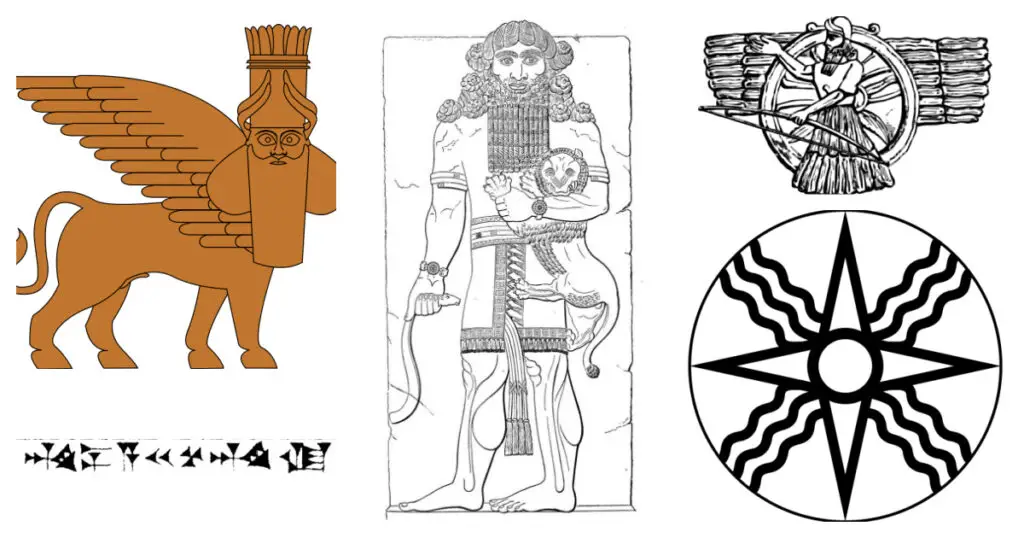
Assyria was an ancient Mesopotamian city-state and one of the most influential ancient civilizations of the Bronze Age. Their territory eventually formed into the Assyrian Empire, which was the largest empire in the world at the time. Their history, religion, and mythology were central to their society and produced many complex and meaningful symbols.
Many of the symbols used by the Assyrians include depictions of rulers or gods, along with mythological creatures and religious symbols. Many Assyrian kings immortalized themselves as legendary figures, which are frequently depicted in Assyrian symbology.
Sargon “King”
Sargon was the name of three separate kings who ruled over parts of ancient Mesopotamia. The most famous is Sargon of Akkad, also known as “Sargon the Great”. He was the first ruler of the Akkadian Empire and became a legendary figure in later Assyrian literature.
His name was used by two different rulers of the Old Assyrian Kingdom and the Neo-Assyrian Empire respectively. The name “Sargon” actually means “the king is legitimate” in Akkadian, one of the major languages spoken in the Assyrian Empire.
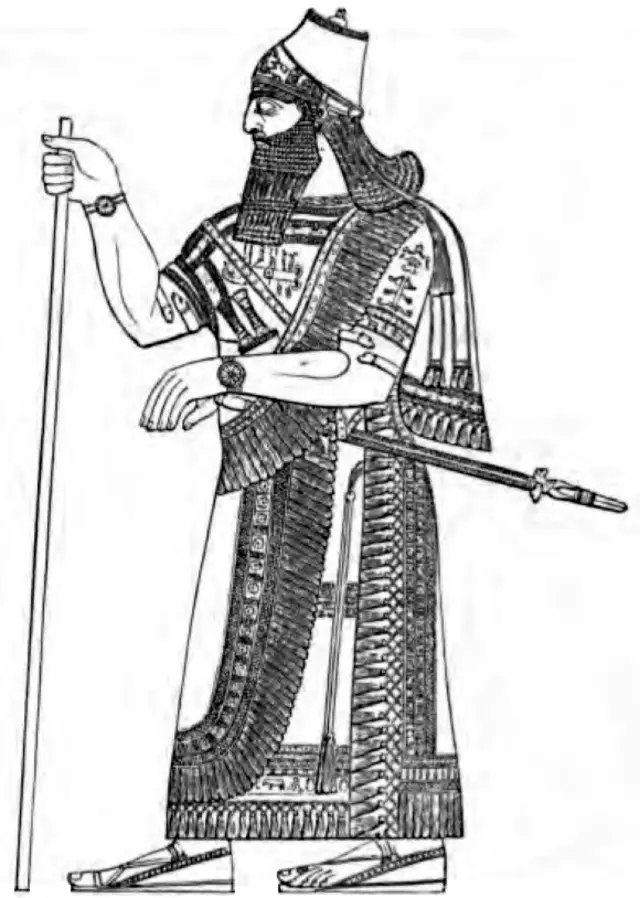
Symbol of Ashur
Ashur was the head of the Assyrian pantheon and the main focus of the ancient Assyrian religion. He is present in most ancient Mesopotamian religions but was particularly worshiped in Northern Mesopotamia.
His symbol shows him superimposed over the Winged Sun, a representation of his supreme divinity. He was also frequently associated with the Tree of Life, as was typical of Mesopotamian royalty.
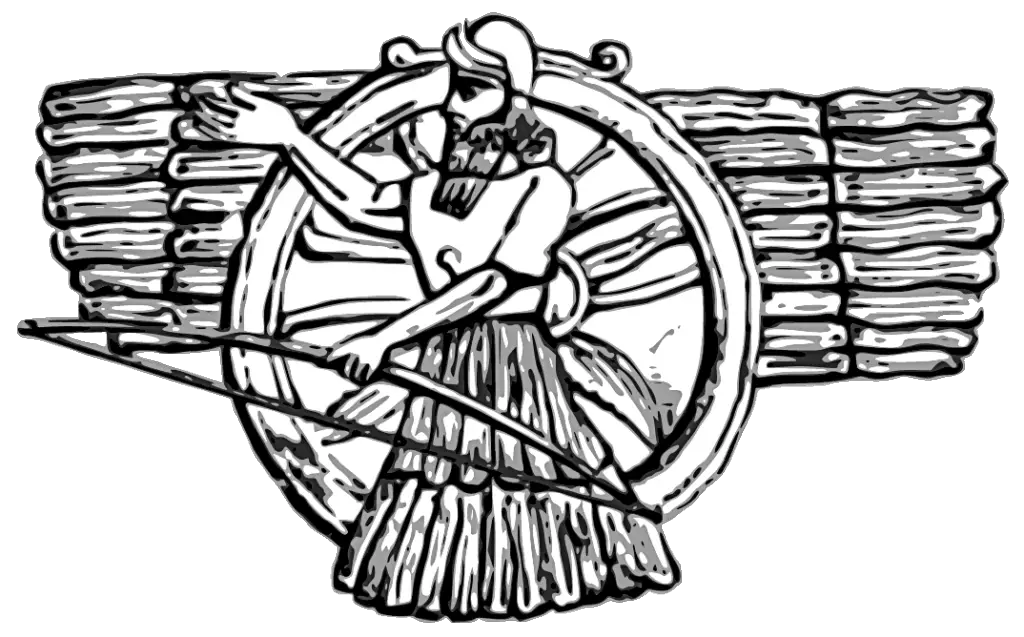
Lamassu
The Lamassu, or winged bull, was a protective deity in ancient Mesopotamian religion. It was typically depicted with the bearded head of a man and broad wings, similar to the sphinx in Egyptian mythology.
Statues of the Lamassu were typically placed outside important structures such as palaces and temples. Smaller statues were als
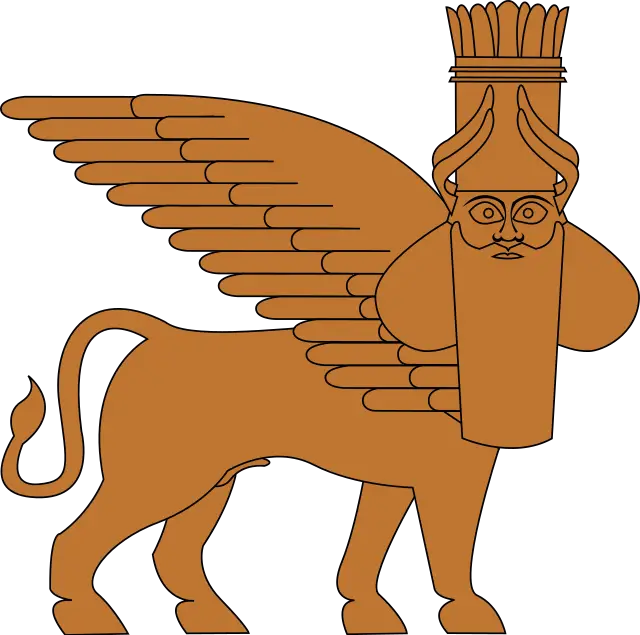
Assyrian Star
The Star of Shamash, or the Assyrian star, is a widely used symbol across ancient Mesopotamia, representing the sun god Shamash.
Shamash would later come to be associated with Ashur during the time of the Assyrian Empire. The star itself appears behind Ashur in the symbol of Ashur described above.

Tiamat
Tiamat is a large water serpent or monster that appears in ancient Mesopotamian myths. The serpent in the waters represents the primordial chaos preceding our mortal world.
Tiamat was slain by Marduk, the patron deity of Babylon, who then created the Earth, heavens, and mankind from her body. The myth parallels ancient Hebrew and Christian myths of the sea serpent Leviathan.
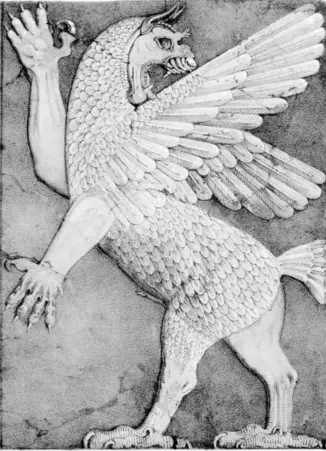
Marduk
Marduk was a major deity in ancient Mesopotamia and the patron deity of Babylon. In the Enuma Elish (ancient Babylonian creation myth), he famously defeated the chaos monster Tiamat and crafted the Earth, heavens, and mankind from her remains.
Marduk is featured prominently in Assyrian religious art and is regarded differently depending on the era. The Marduk Prophecy notably describes several occasions when Marduk abandoned Babylon, and his statue was stolen away into Assyria.
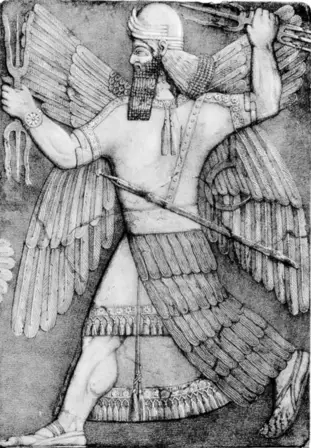
Tree of Life
This depiction of leaves and branches arranged in a node-like pattern was typically associated with Assyrian royalty. The pattern was also common for other areas and eras of Mesopotamian civilization.
The name “Tree of Life” has been coined by modern academics, the original name and meaning of the symbol are unknown, but it is thought to represent the fertility and spirit of the land. Motifs similar to it have been used in later Semitic religions, such as the sephirot in Judaism.

Cherubim
Angels are common symbols throughout religious iconography from ancient times. They are most often described as messengers or agents of the gods. The Hebrew word “cherub” is ultimately derived from the Assyrian “Karibu”, referring to beings that act as intermediaries between gods and humans.
Images of Karibu are inscribed on many reliefs found in the Assyrian ruins of Nimrud, where many symbols from the Neo-Assyrian Empire can be found.
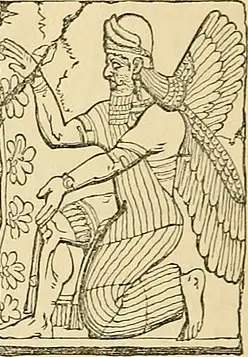
Gilgamesh
The Epic of Gilgamesh is the oldest non-religious major literary work of which original texts still survive. Gilgamesh was the legendary king of Uruk, a city in ancient Sumer that became one of the first centers of urban development. The epic tells the tale of how the great king comes into conflict with the gods, eventually learning to accept his mortality.
Gilgamesh features prominently in Assyrian iconographies, such as this sketch of a bas-relief from the throne room of Sargon II.
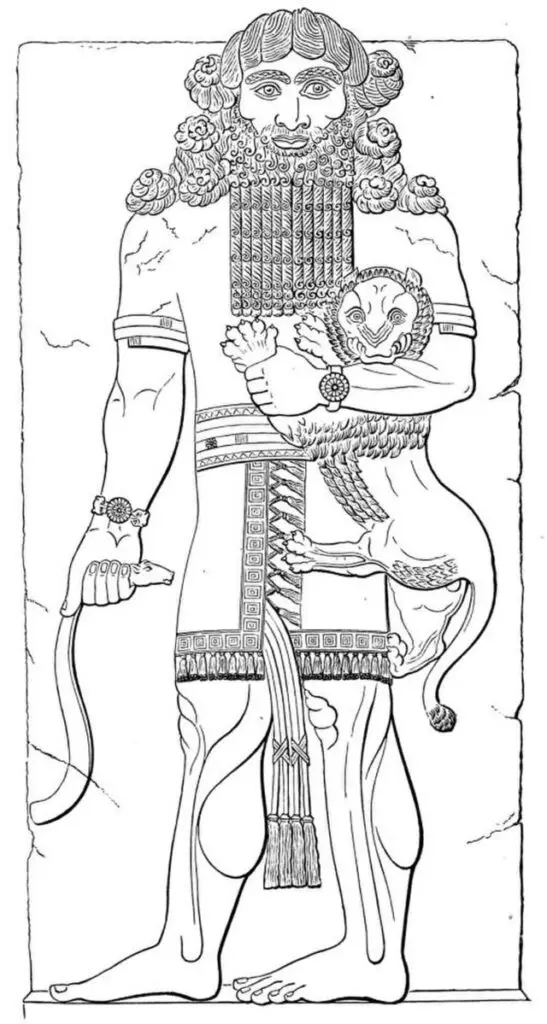
Cuneiform
Cuneiform is the most ancient writing system in the world. It was written with a sharp stylus or chisel used to make impressions in stone or clay tablets. Depicted is the name of the Assyrian king Ashurbanipal, written in Assyrian cuneiform.
Cuneiform was used throughout ancient Mesopotamia for writing various languages, and the bulk of surviving cuneiform text is Akkadian, the main language spoken in the Assyrian Empire.

